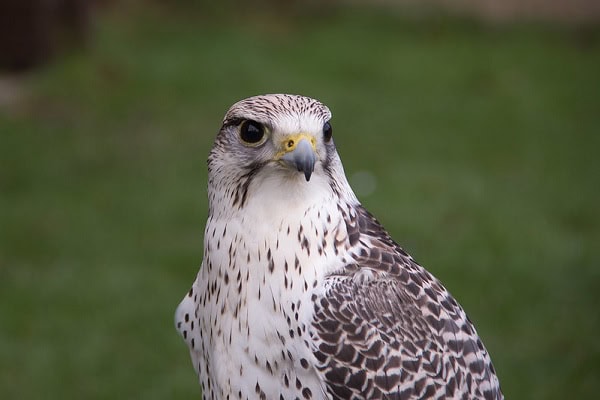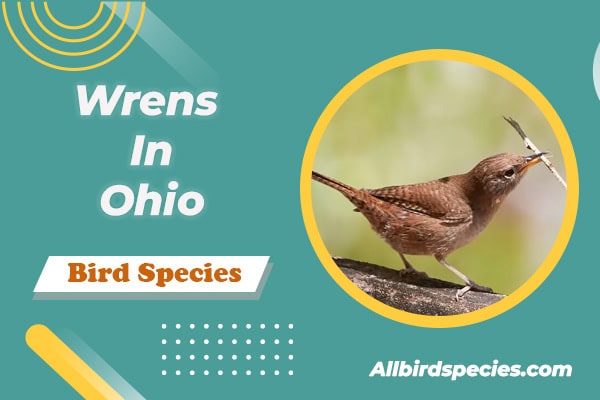4 Types of Falcons in Michigan (ID Guide With Pictures)
Did you know Falcon can dive at speeds over 240 miles per hour? This makes it the fastest bird and one of the most interesting falcons in Michigan. Exploring Michigan’s avian wildlife, you’ll find a variety of falcons, each unique and important to the ecosystem.
In Michigan, four main falcon species exist: the Peregrine Falcon, the American Kestrel, the Merlin, and the Gyrfalcon. They all have different hunting styles and play big roles in the ecosystem. Learning about these falcons can make you appreciate Michigan’s wildlife more.
Introduction to Falcons in Michigan
Falcons are amazing birds known for their speed and agility. In Michigan, many species make up the diverse bird population. Each one has its own traits and ways of surviving. Learning about these falcons helps us appreciate their role in nature.
Overview of Falcon Species
In Michigan, you can find falcons like the Peregrine Falcon, American Kestrel, Merlin, and Gyrfalcon. They live in different places, from cities to wild areas. These birds are key to the local wildlife, showing how diverse and resilient nature can be.
Importance of Falcons in the Ecosystem
Falcons are crucial to the ecosystem. They keep other bird populations in check, which helps balance the food chain. By eating smaller birds, they stop overpopulation and help keep nature healthy.
The health of falcons also tells us about the environment. When falcons do well, it means the ecosystem is strong. It shows there are plenty of food and a healthy balance.
| Falcon Species | Habitat | Diet | Ecosystem Role |
|---|---|---|---|
| Peregrine Falcon | Urban cliffs and skyscrapers | Small to medium-sized birds | Population control |
| American Kestrel | Open fields and urban areas | Insects and small mammals | Pest control |
| Merlin | Forests and grasslands | Small birds | Population regulation |
| Gyrfalcon | Remote tundra and coastal regions | Birds and mammals | Top predator |
Peregrine Falcon
The Peregrine Falcon is a bird that grabs the attention of many in Michigan. It’s known for its speed and looks. This bird is key to the ecosystem. Learning about its traits, hunting skills, and conservation efforts helps us appreciate it more.

Physical Characteristics
The Peregrine Falcon, or Falco peregrinus, is 14 to 19 inches long and has a 3 to 4 foot wingspan. Its feathers are blue-gray with black marks that look like a mustache. These marks help it blend in with its surroundings.
Diving Speeds and Hunting Techniques
This falcon is famous for its top speed of over 200 mph when diving. It uses this speed to catch medium-sized birds. In Michigan, it’s a sight to see during courtship, with its dives and turns.
Conservation Status and Recovery Efforts
Efforts saved the Peregrine Falcon from extinction. Banning DDT and breeding programs helped bring it back. We must keep working to keep this bird a part of our ecosystem.
| Characteristic | Details |
|---|---|
| Length | 14-19 inches |
| Wingspan | 3-4 feet |
| Diving Speed | Over 200 mph |
| Diet | Medium-sized birds |
| Conservation Status | Revived through conservation efforts |
American Kestrel
The American Kestrel is known for its bright colors and ability to adapt. It’s a beautiful sight in Michigan. This small falcon has unique features that help identify it and plays a big role in local ecosystems.

Identification and Coloration
Identifying the American Kestrel is easy because of its bright colors. Males have blue-gray wings and rust-colored backs. Females have a more muted brown look. They are about 8 to 12 inches long and have a wingspan of 20 to 24 inches. These features make them stand out from other birds.
Habitat Preferences in Michigan
American Kestrels live in many places in Michigan. They like open areas like grasslands, farmlands, and even cities. They build nests in places like utility poles and tree cavities, making them easy to spot.
Diet and Hunting Behavior
American Kestrels eat insects, small mammals, and birds. Their hunting style is unique. They hover in mid-air, a behavior called “kiting,” to look for food. This shows their agility and hunting skill in different places.
| Aspect | Details |
|---|---|
| Size | 8-12 inches long, 20-24 inches wingspan |
| Gender Colors | Males: Blue-gray wings, Rust-colored back Females: Brownish tones |
| Habitat | Grasslands, farmlands, urban areas |
| Diet | Insects, small mammals, birds |
| Hunting Behavior | Kiting (hovering mid-air to scout for food) |
Merlin
The Merlin falcon is known for its fierce hunting skills. It’s a remarkable bird found in Michigan. Its appearance, nesting habits, and feeding behavior show its importance in the region.

Appearance and Size
The Merlin falcon in Michigan is 9-11 inches long with a wingspan of 20-26 inches. It has dark blue-gray feathers and rusty-red underparts. This color pattern helps it blend in while hunting. Its sharp talons and bold nature make it a top predator.
Breeding and Nesting Habits
Merlins show interesting nesting habits during the breeding season. They pick tree cavities or old structures to lay 3-5 eggs. Parents take great care of their chicks until they can survive on their own, which is after about 25-30 days.
Feeding Habits and Prey Preference
The Merlin falcon mainly eats small songbirds. Its aggressive hunting helps control the population of these birds. Understanding its feeding habits shows its role in Michigan’s ecosystem.
| Characteristic | Details |
|---|---|
| Size | 9-11 inches |
| Wingspan | 20-26 inches |
| Eggs per Nest | 3-5 eggs |
| Chick Dependency | 25-30 days |
| Main Prey | Small songbirds |
Gyrfalcon
The Gyrfalcon, known as Falco rusticolus, is one of the biggest falcons. It can be 19 to 25 inches long and has a wingspan of up to 4 feet. This bird is a favorite among birdwatchers and nature lovers. In Michigan, you might see them in winter, making your birdwatching trips special.

Physical Characteristics and Size Variations
The Gyrfalcon has a big frame that makes it stand out. Its size helps it hunt better. It also changes color to blend in with its surroundings, making it hard to spot.
Habitat and Distribution in Michigan
Usually found in the Arctic and sub-Arctic, Gyrfalcons can be seen in Michigan during winter. They like areas with cliffs and open spaces. Michigan’s varied landscapes make it a good place for these birds to live, even in the cold.
Diet and Hunting Strategies
Gyrfalcons mainly eat birds like ptarmigans and ducks. They are very agile and fast, using their speed and strength to catch prey. Their hunting skills let them chase down birds in different places, showing they are top predators.
Common Habitats of Falcons in Michigan
Falcons in Michigan live in both city and countryside. Each place has its own special features that help them survive and nest. This variety is key to their success.
Urban vs. Rural Environments
In cities, falcons like to nest on tall buildings and bridges. These spots keep them safe from predators and give them lots of food, like pigeons. On the other hand, rural areas have cliffs and wide open spaces perfect for hunting and making nests. Each place has its own benefits, helping different falcon types to thrive.
Nesting Locations and Preferences
What falcons like to nest in can vary a lot. For instance:
| Falcon Species | Nesting Location | Preferred Structure |
|---|---|---|
| Peregrine Falcon | High ledges | Skyscrapers, cliffs |
| American Kestrel | Tree cavities and man-made structures | Utility poles, birdhouses |
| Merlin | Open conifer forests | Tall trees |
| Gyrfalcon | Cliffs and tundra | Nests on rocky outcrops |
Knowing where falcons live in Michigan is important for keeping them safe. By protecting their homes and the areas around them, we can help falcon populations stay strong and healthy.
Significance of Falcon Conservation
Falcon conservation in Michigan is vital. These birds face many threats. Saving falcons helps protect their species and keeps nature in balance.
Threats to Falcon Populations
Falcons face big challenges. Key threats include:
- Habitat Loss: Humans building cities and farms take away their homes.
- Pesticide Use: Farm chemicals can harm falcons or make it hard for them to find food.
- Competition from Invasive Species: Foreign animals can take over their food and homes, making life harder for falcons.
Conservation Efforts and Community Involvement
Michigan has programs to help falcons. These efforts include:
- Habitat Restoration: They work to bring back native plants and ecosystems to old habitats.
- Public Awareness Campaigns: Teaching people why falcons need our help gets more support from the community.
- Community Nesting Box Initiatives: Putting up nesting boxes helps falcons and gets people involved.
The Michigan Department of Natural Resources is key in these efforts. They watch over the falcons and find ways to lessen threats. The community needs to help make these efforts work in Michigan.
How to Spot Falcons in Michigan
Michigan is a great place for birdwatching falcons. It’s easy for fans to see these amazing birds. Knowing where to look helps a lot in spotting falcons in their natural spots.
Best Locations for Falcon Watching
Here are some top places to see falcons:
- Great Lakes Coastline – The rough shores are perfect for Peregrine Falcons to hunt.
- State Parks – Places like Ludington State Park have different landscapes, great for many falcon types.
- Urban Areas – Cities like Detroit have tall buildings where Kestrels and Peregrines like to stay.
- Rural Areas – Fields and lakes are great for watching falcons hunt.
Recommendations for Birdwatchers
Here are tips to improve your birdwatching:
- Use good binoculars to see details.
- Carry a field guide to identify falcons.
- Stay quiet and patient to not scare the birds.
- Enjoy watching their hunting skills; it’s very rewarding.
Wrapping Up…
Michigan is home to a variety of falcons, each with unique traits that help keep the environment balanced. Learning about the Peregrine Falcon, American Kestrel, Merlin, and Gyrfalcon shows their important roles in Michigan’s wildlife. These birds are not just beautiful to watch; they also tell us about the health of our environment.







